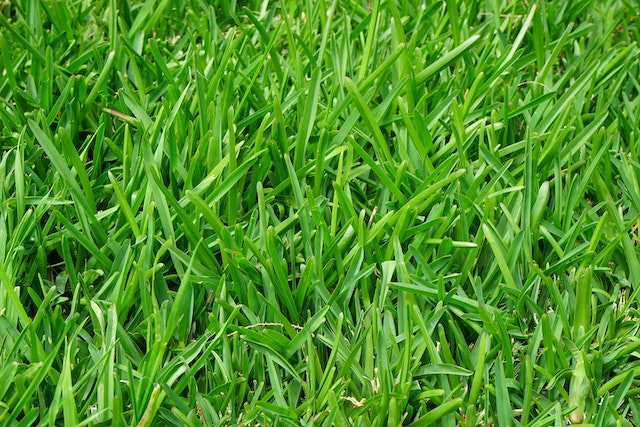
Why can we eat lettuce and spinach, but we can’t eat leaves and grass? We can’t eat leaves and grass because of the cellulose and silica they contain.
There are several different ways of getting energy. Plants photosynthesize and make energy, which they store in their cells. Herbivores eat the plants to get the energy from them. Carnivores eat the herbivores to get the energy that they have taken from the plants. Omnivores can eat the herbivores to get the energy, but they can also directly eat some of the plants to get that energy. Each type of animal has evolved differently to be able to get the maximum amount of energy from their food source. Lions cannot eat vegetables because they haven’t evolved to be able to get the energy out of them and cows cannot eat meat because they don’t have the teeth to rip the meat apart.
Grass and leaves use cellulose to strengthen their cell walls. Our cells are protected by a thin layer of fat, but plants have to be much sturdier and harder for animals to eat, so they have a thick layer of cellulose that goes around their cell walls. Cellulose is made of long chains of glucose that form stiff lines. We could probably chew grass and leaves enough to swallow, but we would not be able to digest the cellulose. You need an enzyme called cellulase to break down cellulose and our bodies don’t make that. This is not a bad thing because the cellulose is fiber, and we need that fiber to help us push the waste out of our bodies. So, how come we can eat lettuce? Lettuce has a lower cellulose content than grass, but we still can’t digest all of it, and that is one of the reasons why we eat it.
Cows and other animals that eat grass and leaves get around this by having bacteria that produce cellulase in their intestines. Cows have a bacteria called ruminococcus. They also have very long intestines to give the bacteria time to work. The bacteria break down the cellulose for them and release the sugars. Most herbivores have more than one stomach because it takes a long time for the bacteria to breakdown the cellulose. The food gets passed from stomach to stomach and each stomach serves a different purpose in the breakdown of cellulose. A cow has four stomachs. The first two are for storage and the second two are for breaking down the cellulose. The released glucose goes into the cow’s blood from there and is one of the things used to make milk. We can’t eat grass because we don’t have the bacteria. We would burn many calories chewing up the grass and we wouldn’t be able to get any calories out of it.
I said that we could probably chew the leaves and grass up enough to swallow them, but we wouldn’t be able to do it very often. Leaves and grasses have a very high silica content, which is abrasive. They have evolved this as a defense against being eaten by animals. Unfortunately for them, animals that eat grass and leaves have also evolved the ability to constantly re-coat their teeth, so they can keep eating. We can’t do that. Eating grass will quickly wear down our teeth. Most herbivores have also evolved a side to side grinding way of chewing. They breakdown the grass as much as possible in the same way a mortice and pestle breaks down things. This is one reason why they can’t eat meat. To be able to digest meat, it has to be ripped apart by the teeth before it enters the stomach, and herbivores cannot do that.
All of this being said, humans do actually eat grass. Bamboo is a type of grass and it is eaten in many countries around the world. However, because of the cellulose problem, we can only eat the soft shoots. The hard outer part has to be removed and the bamboo has to be boiled so that it is soft enough for us to chew. And, even then, we cannot digest much of it. We have the same problems that panda do. Luckily, we can eat other things as well.
So, why can we eat lettuce and spinach? A lot of salad leaf vegetables have been bred to have a lower cellulose content, and to taste less bitter. We still cannot digest the cellulose that is in them, and it passes straight through us as insoluble fiber. However, we can break open the cells without cellulose by chewing them, and we can digest the sugars, vitamins, and minerals within them. And this is what I learned today.
Sources
https://en.wikipedia.org/wiki/Omnivore
https://en.wikipedia.org/wiki/Cellulose
https://www.bbc.co.uk/bitesize/topics/znyycdm/articles/z2d2gdm
https://www.vedantu.com/biology/cellulose-in-digestion
https://www2.kenyon.edu/projects/farmschool/food/milkbio.htm
